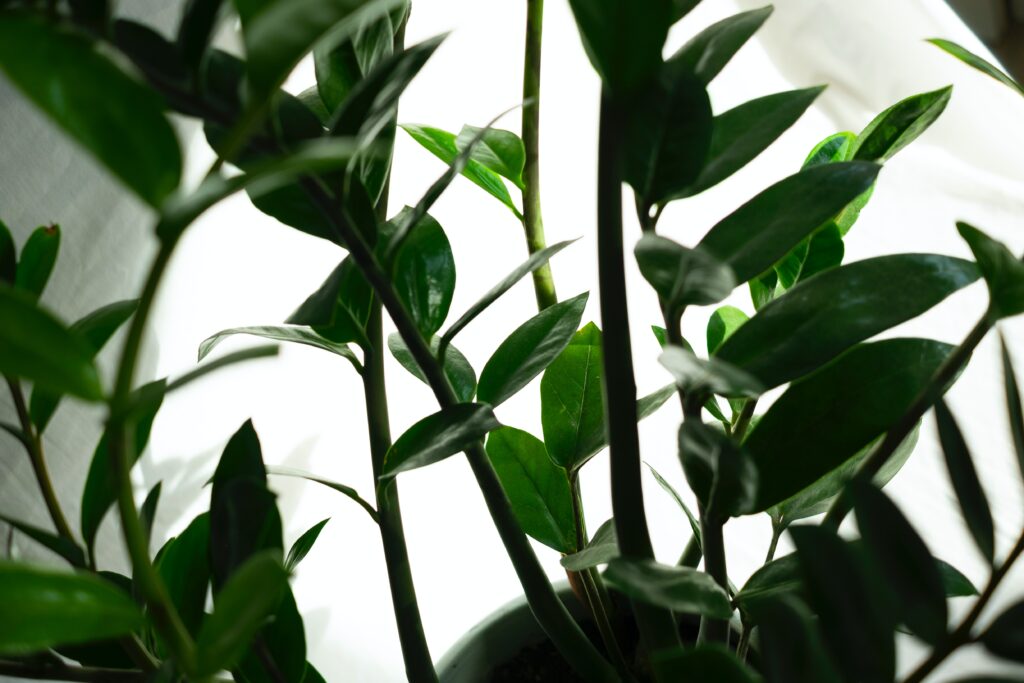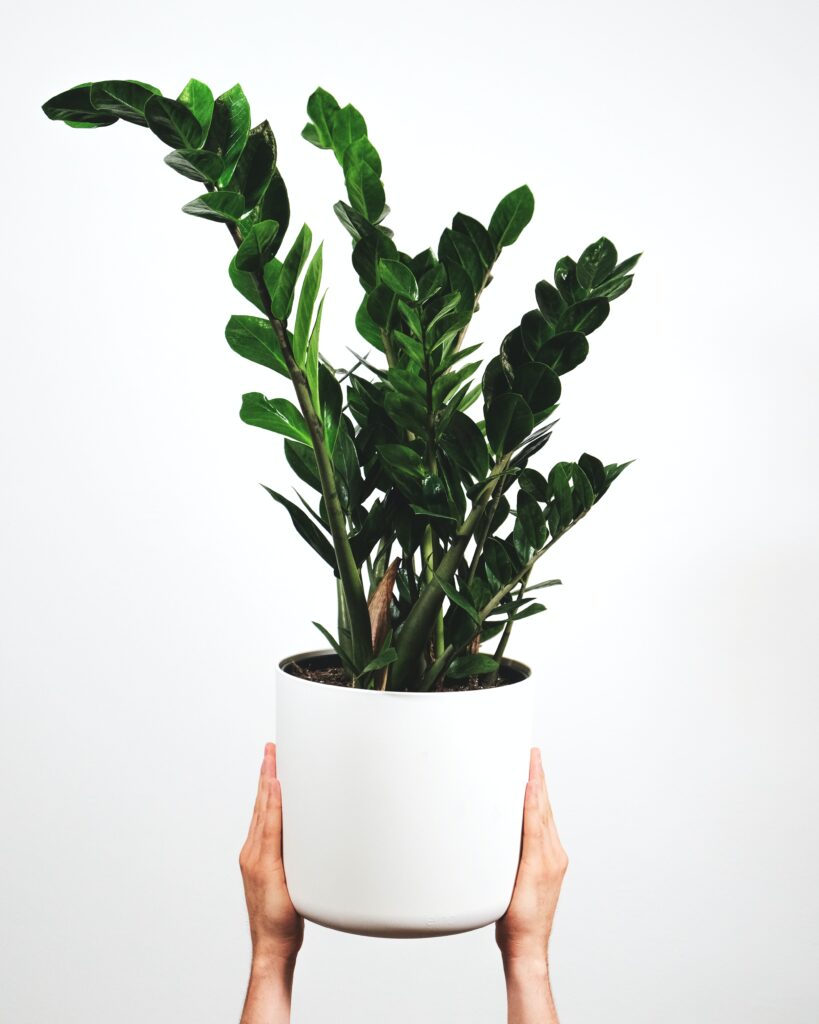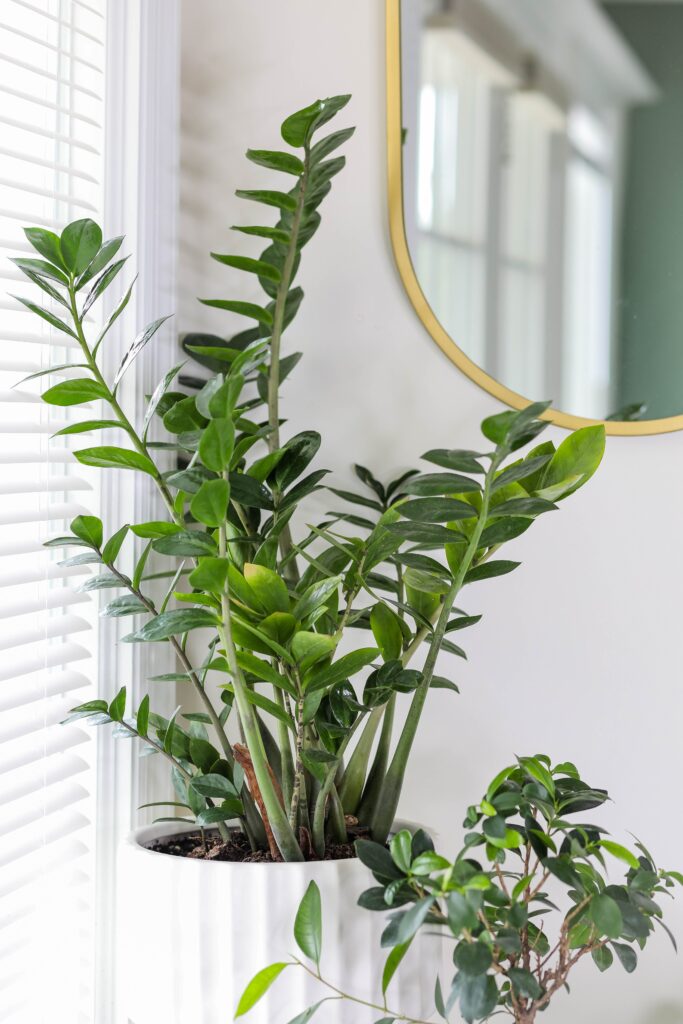In this article we will discuss how to take care of ZZ plant and create a thriving indoor oasis with this comprehensive guide. Learn about their origins, ideal conditions, watering techniques, soil selection, and more.
Understand tips to overcome care challenges and enjoy the lush green elegance of this amazing plant in your home. Elevate your indoor space with these low-maintenance, resilient companions.
Table of Contents
Introduction
Zamioculcas zamiifolia plants have become increasingly popular as indoor houseplants due to their striking appearance and reputation as low-maintenance green companions.
Originally hailing from Eastern Africa, these resilient plants have found their way into homes, offices, and various indoor spaces, adding a touch of lush greenery to any environment.
In this article, we will delve into the plant care, equipping you with the knowledge and techniques needed to ensure your plant thrives and flourishes indoors.
Understanding Plant Care
Before delving into caring for this particular plant, it’s essential to understand its origin and characteristics.
Zamioculcas Zamiifolia belongs to the Araceae family and is known for its glossy, dark green foliage, which consists of numerous leaflets.
These plants are available in different varieties and cultivars, some featuring variegated leaves or unique growth patterns, allowing plant enthusiasts to choose a plant that suits their aesthetic preferences.

Creating Ideal Indoor Conditions
These plants have specific preferences when it comes to their indoor environment. While they are adaptable, providing the best possible conditions will promote healthier and more vigorous growth.
Light Requirements
These plants prefer low to moderate indirect light. Placing them near a north or east-facing window is ideal, as they can enjoy bright, filtered light without direct sun exposure, which can scorch their leaves.
Temperature and Humidity Considerations
ZZ plants thrive in typical indoor temperatures ranging from 65°F to 75°F (18°C to 24°C). They can tolerate lower temperatures, but it’s essential to avoid exposing them to frost or extremely cold drafts.
As for humidity, these plants can handle average indoor humidity levels, making them suitable for various climates.
Mastering the Art of Watering
Watering is a crucial aspect of plant care, as it directly impacts their health and well-being. Achieving the right balance is essential to prevent common issues like overwatering or underwatering.
Establishing a Watering Schedule
These plants don’t require frequent watering. It’s best to allow the soil to dry out between waterings to avoid waterlogged roots.
Watering once every 2-3 weeks during the growing season (spring and summer) and reducing it during the dormant period (fall and winter) is generally sufficient.

Proper Watering Technique
When it’s time to water, make sure to water the soil directly rather than the leaves. Over time, you’ll get a sense of your plant’s water needs, and by observing its foliage, you can gauge when it’s thirsty.
Signs of Underwatering and Overwatering
ZZ plants show distinct signs when they are underwatered or overwatered. Wrinkled or yellowing leaves may indicate underwatering, while blackened or mushy roots could be a sign of overwatering.
Selecting the Right Soil and Pot
Choosing the right soil and pot is crucial for providing the ideal growing conditions for your ZZ plant.
Well-Draining Soil
ZZ plants prefer well-draining soil to prevent water from pooling around their roots. A mixture of potting soil, perlite, and sand works well to ensure proper drainage.
Pot Size and Material
When repotting, choose a pot that allows some room for root growth but isn’t excessively large.
Terracotta pots are ideal for their porous nature, allowing excess moisture to evaporate, but plastic or ceramic pots can also work well if proper drainage holes are provided.
Feeding Your Plant
These plants are relatively low-feeders, and overfertilization can harm their growth. Use a balanced, diluted houseplant fertilizer and apply it sparingly during the growing season, usually once a month.

Pruning and Propagation
Pruning ZZ plants is minimal, primarily focusing on removing any yellow or damaged leaves to maintain a tidy appearance. If you wish to propagate your ZZ plant, it can be done through division or leaf cuttings.
Pest and Disease Management
ZZ plants are hardy and relatively resistant to pests and diseases. However, it’s essential to keep an eye out for common houseplant pests such as spider mites or mealybugs and address them promptly if detected.
ZZ Plant Care Challenges and Solutions
While ZZ plants are generally easy to care for, they can face specific challenges such as yellowing leaves or slow growth. Addressing these issues promptly can help your plant rebound and thrive.
Adding a Touch of Zamioculcas zamiifolia Plant Elegance to Your Space
Finally, this plant can complement any interior space beautifully. Consider placing them in living rooms, offices, bedrooms, or any room that could benefit from their lush green presence.
Read more about ZZ Plant in this article.
Experiment with various potting and display ideas to find the perfect fit for your home decor.
With proper care and attention to their specific needs, you can enjoy the timeless beauty of the plants as they bring life and vitality to your living spaces. Happy ZZ plant parenting!
If you are a nature lover then you will also like to read this article and explore more.



